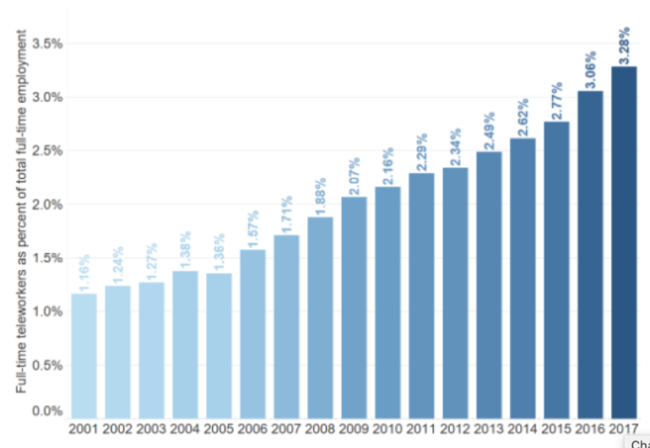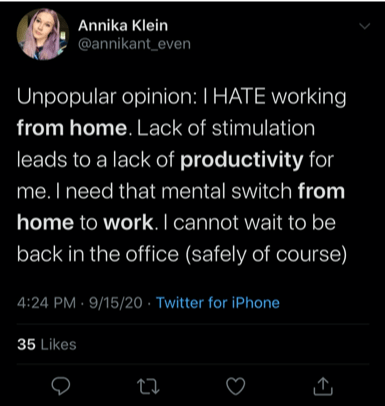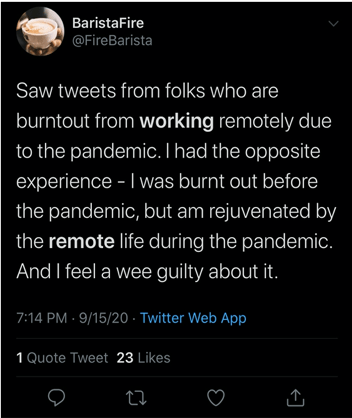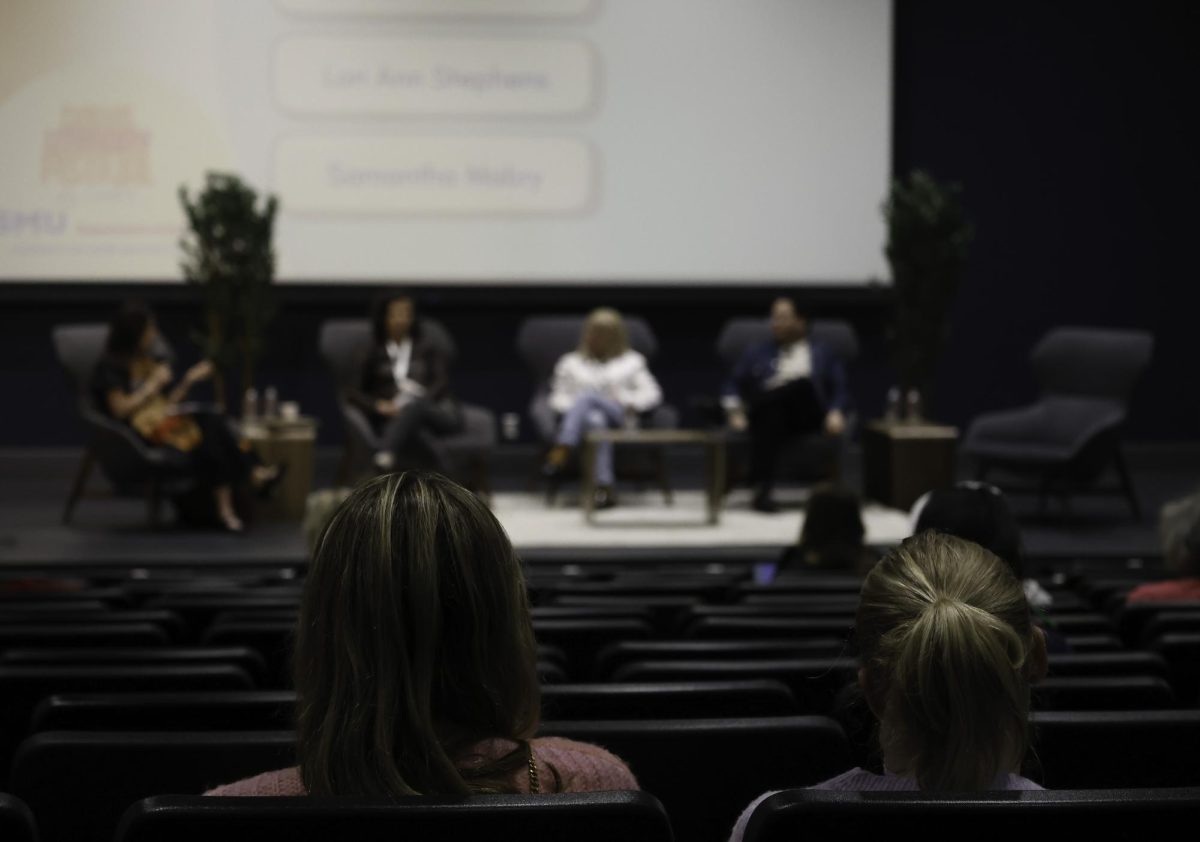Caroline Lidl thought she’d be working in a sunny public relations office when she graduated from SMU last spring, meeting new friends, going to lunch and working on projects with colleagues. Instead, her Dallas apartment has become her new office.
“I feel like most people graduate from school and start their new job and make all of these new friends and connections. I just don’t have that yet,” said Lidl, who earned a degree in Marketing and Fashion Media at SMU.
Lidl is just one of the many recent graduates who was looking forward to working in the real world and experiencing an office environment. But thanks to the pandemic, people have been confined to working from their homes or apartments instead. Like it or not, remote work is on the rise. The class of 2020 is living through this upheaval, and the class of 2021 must prepare for it.

Remote job openings rose 270% since 2017, according to research by job search engine Adzuna, which analyzed 4.5 million U.S. employment postings. Now, spurred on by COVID-19, even more employers are switching positions remotely. According to Gallup, the percentage of workers who say their employer is offering remote work options has grown to 57% in polling conducted from March 30 to April 2.
“The general hiring trend I’ve been seeing is businesses hiring remote workers, but telling them that there is a possibility that the position will transition in person,” said Palmer Beldy, student mentor at the SMU Heigi Career Development Center and junior Public Relations and Creative Advertising major. “In order not to get anyone’s hopes up, businesses would rather students prepare for their position to be remote.”
Beldy collaborates with students through the SMU Hegi Career Development Center and advises them on how to best prepare for a future in the workforce.
“I know this is a stressful time for finding jobs, but just remember what your priorities and values are when looking for a job. If working in person is important to you, there are still plenty of jobs hiring in-person positions,” said Beldy. “Don’t settle for a job that makes you unhappy or hinders you from being productive because of your work environment.”
Caroline Lidl has been working remotely as the Social Media and PR Coordinator for Mod Op, a digital marketing agency, since July. She says working in an office would be ideal, but understands that businesses were not prepared for a global pandemic to uproot their workplace.
“It’s probably the first time businesses have even had to deal with anything like this, so it’s no fault of their own. They’re trying new things and getting better at it as time goes on,” said Lidl. “But still, most of my co-workers are young people, and I have really no connection to any of them.”
Remote work can mean more flexibility and higher productivity, though it can also lead to less collaboration and more risk of distraction. According to the OWL Labs’ State of Remote Work in September of 2019, the impact of remote work on productivity, creativity and morale has been up for debate, primarily because working from home offers employees fewer opportunities to talk and network with their colleagues. Young people entering the work world are nervous about living up to expectations in their remote positions.


“I really don’t mind working remotely,” said Max Hogan, who earned a Political Science degree at SMU. Hogan has been working in a government affairs position at Global Foundries, a semiconductor manufacturer in Austin, since June. “Morale-wise, though, it’s not always easy to work alone. I really have to keep myself in check and hold myself accountable in order to get work done.”
Despite the advantages and disadvantages of working remotely, graduates are thankful to be getting jobs at all.
“I would love to work in person with my team,” said Anne Thibault, who will graduate from SMU with an engineering degree in May, and will start her job as a pricing specialist at Texas Instruments in July.
“But, I really can’t complain. I know so many people who have lost jobs and internships because of the pandemic,” she said. “I’ll take remote work over nothing.”
Employees aren’t the only ones affected by the rise of remote work. Business owners have to deal with facilitating these changes.
Patrick Dugan is the owner of North Bridge Staffing Group in Chicago, a professional service and staffing agency with a team of 10 full-time employees.
“We were all working together in the same office before the pandemic. I made the decision to go fully remote in the end of March as a two-week trial basis to see how things with the virus would go,” said Dugan. “Six months later and here we are. Still remote.”
About 34 percent of workers switched to working from home in March, according to an April 2020 study by the Massachusetts Institute of Technology. In addition, 14.6% of workers reported they were already working from home before the pandemic hit. This suggests that nearly half the workforce is now working from home.
“Remote work isn’t a trend,” said Stephen Morrissette, a Professor of Business Administration at the University of Saint Francis in Joliet, Illinois. “It has been gaining popularity for years and COVID-19 is the straw that broke the camel’s back.”
Morrissette said that businesses are becoming increasingly compliant in incorporating remote work in order to attract quality talent and to maintain continuity of operations during crises.
Employers “are taking advantage of a wider pool of potential employees because geography isn’t a problem anymore,” said Morrissette. “Plus, switching positions to remote takes away the risk of another COVID-like crisis. I think a lot of businesses learned that lesson the hard way.”















